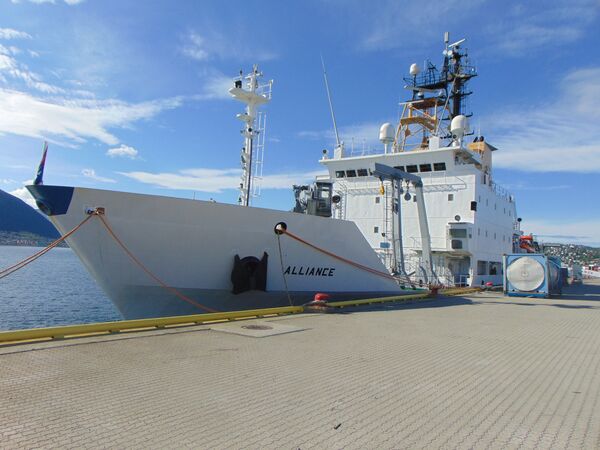
NRV Alliance at Tromsø on 7 June, the eve of its departure to measure climate change in the Arctic and Barents Sea. (Janes/Nicholas Fiorenza)
NATO research vessel (NRV) Alliance is measuring climate change in the Arctic and for the first time in the Barents Sea through to 12 July after departing the Norwegian port of Tromsø on 8 June.
In addition to the ship's 44-person crew, there are scientists from the NATO Science and Technology Organisation's (STO's) Centre for Maritime Research and Experimentation (CMRE) in La Spezia, Italy, and partner countries, as well as CMRE engineers, onboard Alliance . The scientists will measure how climate change in the Arctic affects sonar performance in the region. The data collected will be used to adapt submarines, unmanned underwater vehicles (UUVs), and other systems.
Led by CMRE, the two missions are conducting research for the first time on the Barents Sea Polar Front, an area where Atlantic and Arctic water masses meet but do not mix. During the Nordic Recognized Environmental Picture (NREP) 24 research mission from 8 to 30 June, scientists from CMRE and partner countries France, the Netherlands, Norway, and the United Kingdom are focusing on changes in sound propagation in the central Barents Sea. Some of the crew and scientists will be changed on 30 June to conduct the second research mission, Arctic Climate Observatory (ACO) 2024 from 1 to 12 July, with partner countries France, Italy, Norway, and the UK collecting data on the long-term environmental conditions in the area, including marine biology, water movements, and the soundscape. CMRE senior scientist Gaultier Real, who is an acoustician, told journalists visiting Alliance
Looking to read the full article?
Gain unlimited access to Janes news and more...







